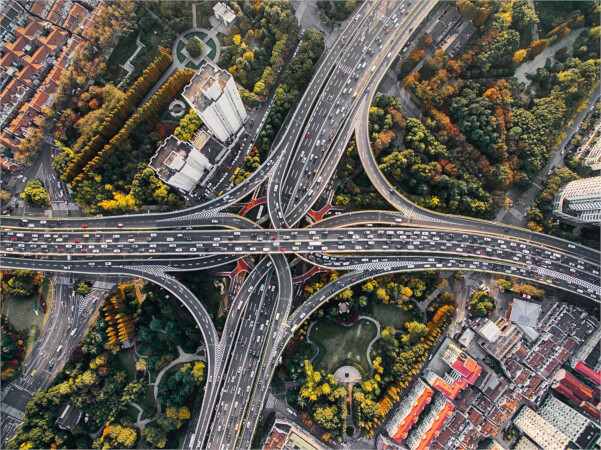Examining the Benefits of Electric Road Systems
Electric road systems could pave the way for smaller EV batteries and alleviate range anxiety.
Charging while on the go, using an electric road system (ERS), could allow electric vehicle (EV) batteries to be reduced by up to 70 percent, according to a study by Chalmers University of Technology in Sweden.

Electric road systems could reduce EV batteries by up to 70 percent. Image used courtesy of Pixabay
For the study, researchers looked at concepts for electric road systems and the real-life driving patterns of 400 Swedish drivers to determine the optimal battery size, charging requirements, and the total cost of the new infrastructure.
Electric Road System Technology
Countries like Sweden, Germany, and Denmark are looking at electric road systems to overcome range anxiety and encourage more widespread EV adoption. An ERS uses wire loops embedded in the roadway or wires suspended above traffic to provide electrical energy to charge a vehicle while it is in motion. Because the battery can be constantly charged while underway, the size of the battery can be reduced while still meeting customer needs for range and performance.
The lithium-ion battery used to power an EV makes up 30 to 40 percent of the vehicle’s cost. The Chalmers study has shown that a combination of home charging and electric roads on 25 percent of European roads would allow EV batteries to be significantly smaller while still providing the range and peace of mind that drivers need. EV batteries could be up to 70 percent smaller and still meet all the requirements.

Electric road systems could help overcome range anxiety and encourage EV adoption. Image used courtesy of Pixabay
Smaller Batteries
A smaller battery in an EV brings a variety of advantages. In addition to lower cost, smaller batteries require less critical raw materials like lithium, nickel, and cobalt in their manufacture, allowing the world’s resources to stretch further. Smaller batteries are also lighter, making an EV more efficient and providing less strain on tires and brakes while also reducing damage to roadways.
The study also showed that charging on the go also allows the load on the power grid to be more effectively spread out during the day when compared to charging only at night while at home.
Who Benefits From ERS Technology?
One result from the Chalmers study was that different groups of drivers benefitted in different ways from combinations of home charging and the ERS technology. For example, people living in rural areas might need up to 20 percent more battery capacity than city dwellers to reach an electrified highway.
Although not part of this study, using ERS might also benefit the trucking industry—trucks could travel longer distances with smaller batteries, making them more efficient and capable of greater cargo loads.
The government of Sweden has proposed banning new gasoline and diesel vehicles beginning in 2030, so developing a workable ERS is not simply an academic exercise. A few short test sections that use different electric road technologies have been constructed in Sweden, in Lund, and on Gotland Island. The first large-scale electric road in Sweden— a 21-kilometer stretch between Örebro and Hallsberg—will be completed in 2026. The Swedish Transport Administration is coordinating the project.






